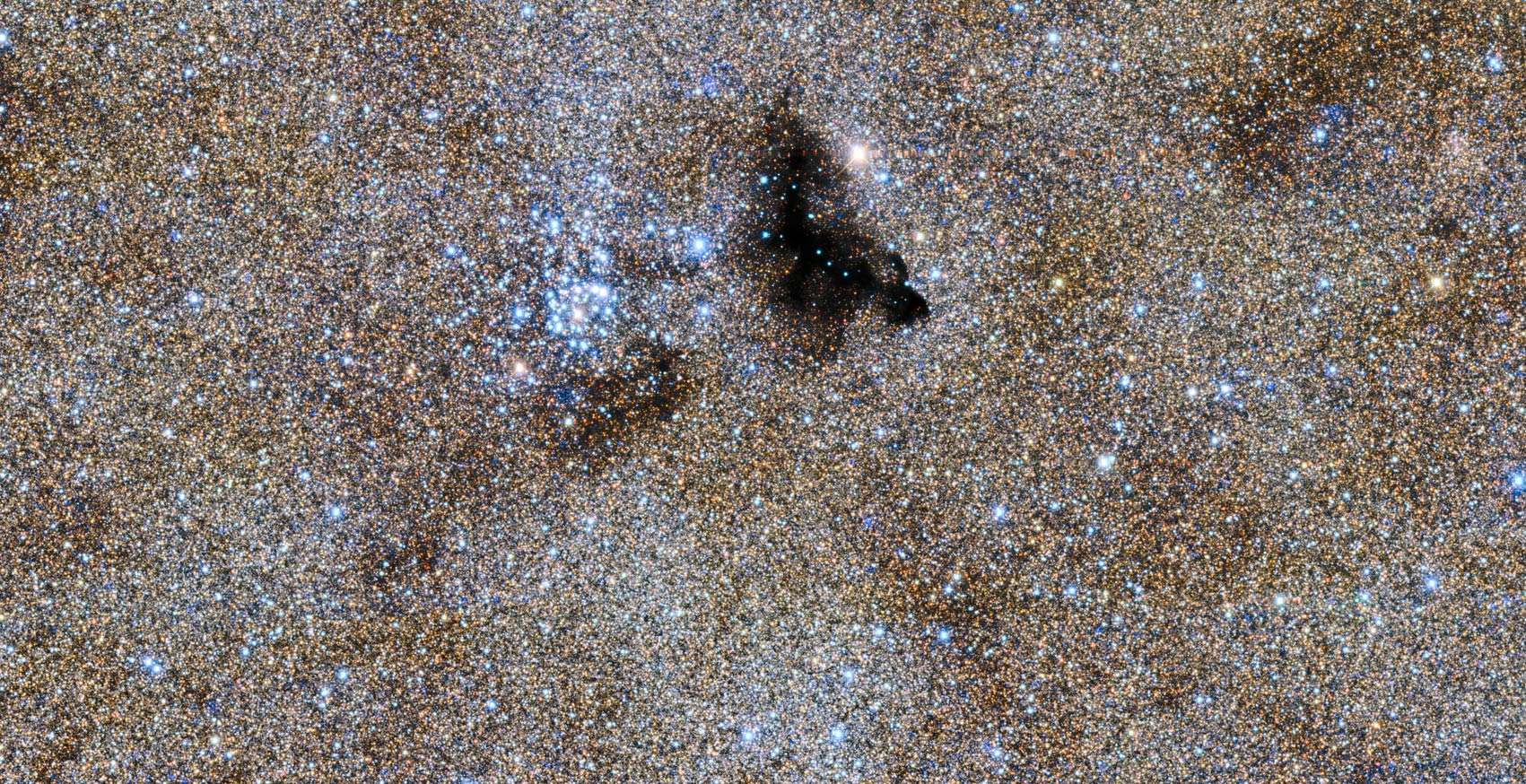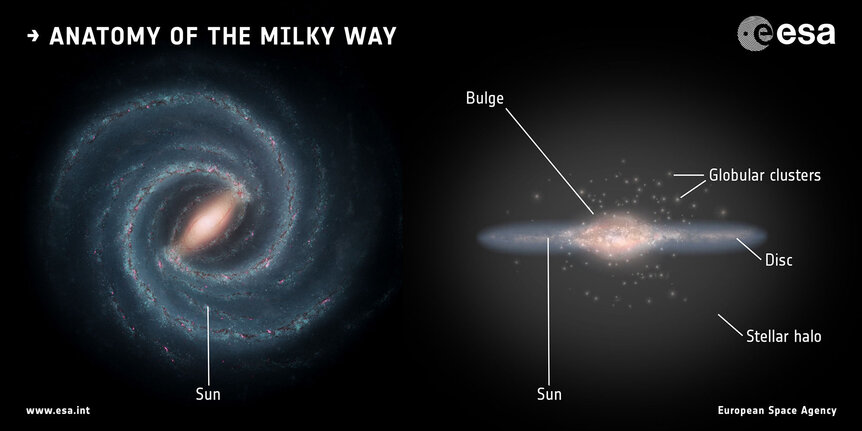What do 10 *million* stars look like?

The thing that's hard to grasp, even when you've been an astronomer your whole life, is just how ridiculously full of stars galaxies are.
Certainly when you look at images of nearly any galaxy it looks like a continuous glow, the distance between stars no match for the mind-crushing distance to the galaxy involved. They all blur together.
And even though we live inside a galaxy, the Milky Way, grasping the total population of its stellar citizenry is nearly impossible. After all, when you go outside at night, even at the darkest site you can find, only a few thousand stars are visible. Looking through binoculars helps, but you don't see a big field of view, so again the number is limited.
But then, sometimes, an image comes along that helps. Behold, a vista of our galactic center:
Ye. GADS.
That's a lot of stars. Very roughly 10 million, give or take.
Our galaxy is a flat disk some 120,000 light years wide, with a bulge in the middle spanning very roughly 15,000 light years. The Sun and Earth are out in the disk about 26,000 light years from the center, so we see that bulge from a distance. You can see it in the sky, located in the constellation of Sagittarius; a fuzzy kinda sorta circular glow from the combined stars there.
The image shows the bulge a bit south of the galactic center — there's less gas and dust between us and it, giving a clearer view. Astronomers used the phenomenal Dark Energy Camera — a massive mosaic of more than 650 detectors that total 520 megapixels — on the CTIO 4-meter telescope to observe that part of the sky and survey the stars there.
It's a lot of stars, and the image I used here is heavily compressed. The full size TIFF file is 50,000 x 25,000 pixels and weighs in at over 3 GB, if you wanna take a poke that that. If not, there's a zoomable/pannable version online that will give you a better sense of what you're looking at.
The science from such a survey is phenomenal. For example, it's been thought that the stars in the bulge were born in at least two separate waves early on in the history of the galaxy. However, by looking at the colors of about 70,000 stars in the bulge, they were able to determine that the vast majority formed at the same time, over 10 billion years ago. That tells us a lot about the very early history of star formation in the galaxy.
They also looked at several globular clusters, very old collections of up to a million stars held together by their own gravity, and were able to show that for some they can easily examine the stars in them. For example, M22 is a particularly massive cluster that happens to be passing through the galactic disk, and the gravity of the Milky Way is stripping stars away from it. They could see those stars well away from the cluster itself, which gives insight on the evolution of globular clusters over the eons.
The two research papers published (here and here) have much more science in them, though the main point is to show the kinds of science that can be done with surveys with large numbers of stars in them. This survey is a kind of a testbed for future ones that will be done with the enormous Vera Rubin Observatory, and it's clear those will be staggering.
Which brings me back to the survey itself. That image above? It's about 4° x 2° in size on the sky, small enough that you can nearly block it with just your outstretched thumb. But that is only a small fraction of the entire survey created, which is something like 10° x 20° and contains 250 million stars.
Two hundred and fifty million.
And even then that's a fraction of the stars in the bulge, which number in the billions... and that's a fraction of the total number of stars in the Milky Way, which may be up to 400 billion. That's more than a thousand times the number of stars in the survey, and 40 thousand times as many as you see in the image at the top of this post.
Earlier, I said this image can help you understand the scale of the number of stars in the Milky Way. And maybe it does, by showing you enormous number of stars in a single image.
But even that falls miserably short of the total number of stars in the galaxy. 400 billion is a vast, vast number.
I've been looking at the stars a very long time, and 400 billion of them is well beyond my ability to truly comprehend. I mean, I can see the number and understand it, calculate things based on it, and even use it as a unit for galactic populations.
But truly grasp it? Nope. My puny ape brain balks hard at that. It's too big.
… and it's one of two trillion galaxies in the observable Universe, some bigger, some smaller, and even then we may only be seeing a tiny, tiny fraction of the entire Universe, the vast majority of which is beyond our observing horizon as the Universe expands around us.
It's a big place. It's amazing to think images like this one will help us understand it! But you have to start somewhere.






























